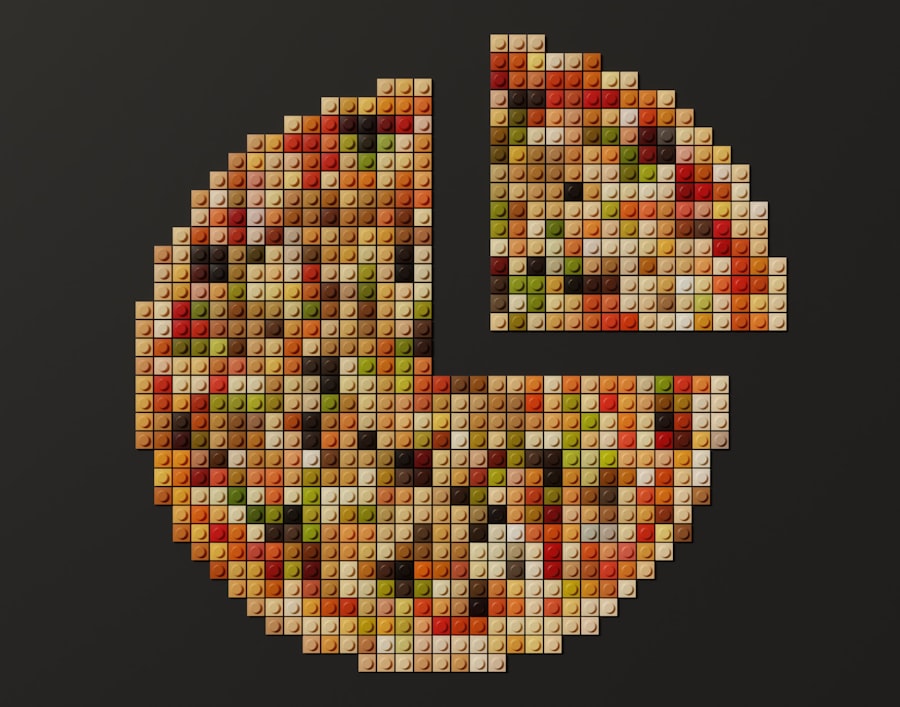Clinical trial icons serve as visual representations that encapsulate complex information about clinical studies, making it easier for stakeholders to grasp essential details at a glance. These icons can depict various aspects of a trial, including its phase, the type of intervention being tested, the target population, and the overall study design. For instance, a simple icon might represent a Phase I trial with a depiction of a syringe, while another might illustrate a Phase III trial with a group of diverse individuals, symbolizing a larger sample size and broader demographic reach.
The use of icons is particularly beneficial in an era where information overload is common; they distill intricate data into easily digestible formats. The design of clinical trial icons is not merely an aesthetic choice; it is rooted in the principles of effective communication. Icons must be intuitive and universally understandable to ensure that they convey the intended message without ambiguity.
This requires careful consideration of cultural differences and the potential for misinterpretation. For example, an icon representing a placebo might be interpreted differently across various cultures, necessitating a thoughtful approach to iconography in clinical research. By employing standardized symbols and clear imagery, researchers can enhance comprehension among diverse audiences, including patients, healthcare professionals, and regulatory bodies.
Key Takeaways
- Clinical trial icons simplify complex research information for better understanding.
- They play a crucial role in enhancing communication among researchers, participants, and stakeholders.
- Using icons improves data visualization, consistency, and efficiency in clinical trial documentation.
- Challenges include standardization issues and potential misinterpretation of icons.
- Future trends focus on digital integration and evolving best practices to maximize icon effectiveness.
Importance of Clinical Trial Icons
The importance of clinical trial icons cannot be overstated, as they play a crucial role in enhancing communication among stakeholders involved in clinical research. In an environment where clarity is paramount, these icons serve as a bridge between complex scientific concepts and layperson understanding. For patients considering participation in clinical trials, icons can demystify the process by visually summarizing key elements such as treatment types, potential risks, and study phases.
This visual simplification can empower patients to make informed decisions about their involvement in research studies. Moreover, clinical trial icons facilitate better engagement with regulatory agencies and institutional review boards (IRBs). When submitting trial protocols or updates, researchers often need to present their information succinctly.
Icons can streamline this process by providing quick visual cues that highlight critical aspects of the study design and methodology. This not only saves time but also enhances the likelihood of approval by making it easier for reviewers to assess the trial’s objectives and procedures. In this way, clinical trial icons contribute to a more efficient research ecosystem by fostering clearer communication between researchers and regulatory bodies.
Role of Clinical Trial Icons in Research

In the realm of clinical research, icons serve multiple roles that extend beyond mere decoration. They function as tools for education, helping to inform both participants and the general public about ongoing studies. For instance, during recruitment campaigns, researchers can utilize icons in brochures or online advertisements to quickly convey essential information about the study’s purpose and requirements.
This visual approach can attract a wider audience by making the information more accessible and engaging. Additionally, clinical trial icons play a significant role in data visualization within research publications. When presenting findings in journals or conferences, researchers often rely on graphical representations to illustrate their results effectively.
Icons can be integrated into these visualizations to highlight specific outcomes or methodologies, thereby enhancing the overall clarity of the presented data. By incorporating icons into research dissemination efforts, scientists can ensure that their findings resonate with both specialized audiences and the general public, ultimately promoting greater understanding and interest in clinical research.
Benefits of Using Clinical Trial Icons
| Benefit | Description | Impact on Clinical Trials | Example Metric |
|---|---|---|---|
| Improved Communication | Icons simplify complex information, making it easier for participants and staff to understand trial protocols. | Reduces miscommunication and errors during trial execution. | 30% decrease in protocol deviations |
| Enhanced Participant Engagement | Visual cues help participants better grasp trial steps and requirements. | Increases participant retention and compliance. | 15% increase in participant retention rates |
| Faster Training | Icons aid in quicker onboarding of clinical staff by visually summarizing procedures. | Reduces training time and accelerates trial startup. | 20% reduction in staff training duration |
| Standardization | Consistent use of icons promotes uniform understanding across multiple sites. | Improves data quality and consistency. | 10% improvement in data accuracy |
| Accessibility | Icons support comprehension for non-native speakers and individuals with low literacy. | Broadens participant diversity and inclusivity. | 25% increase in diverse participant enrollment |
The benefits of using clinical trial icons are manifold, particularly in terms of improving comprehension and retention of information. One significant advantage is that icons can reduce cognitive load for individuals trying to process complex information. By breaking down intricate concepts into simple visual elements, researchers can help audiences grasp essential details without becoming overwhelmed by text-heavy explanations.
This is especially important in clinical trials where participants may be unfamiliar with medical terminology or research protocols. Furthermore, clinical trial icons enhance the overall aesthetic appeal of materials related to research studies. Well-designed icons can make brochures, websites, and presentations more visually engaging, which can lead to increased interest and participation in trials.
For example, a visually appealing infographic that incorporates icons to represent different phases of a trial may capture the attention of potential participants more effectively than a traditional text-based format. This increased engagement can ultimately lead to higher enrollment rates and better representation of diverse populations in clinical studies.
Challenges and Limitations of Clinical Trial Icons
Despite their numerous advantages, the use of clinical trial icons is not without challenges and limitations. One primary concern is the potential for misinterpretation or ambiguity in icon design. If an icon is not universally understood or is culturally specific, it may lead to confusion rather than clarity.
For instance, an icon intended to represent “safety” might be interpreted differently across various cultural contexts, leading to misunderstandings about the risks associated with participation in a trial. Another challenge lies in the standardization of icons across different studies and institutions. The lack of universally accepted symbols can result in inconsistencies that hinder effective communication.
Researchers may develop their own unique icons for specific trials, which can create confusion when participants encounter different symbols across various studies. Establishing a standardized set of clinical trial icons could mitigate this issue, but achieving consensus among stakeholders in the research community presents its own set of challenges.
Best Practices for Implementing Clinical Trial Icons

To maximize the effectiveness of clinical trial icons, researchers should adhere to several best practices during their design and implementation processes. First and foremost, it is essential to prioritize clarity and simplicity in icon design. Icons should be easily recognizable and convey their intended message without requiring extensive explanation.
Utilizing familiar shapes and symbols can enhance understanding; for example, using a heart symbol to represent cardiovascular studies is likely to resonate with most audiences. In addition to clarity, researchers should consider conducting user testing when developing new icons. Engaging potential participants or stakeholders in the design process can provide valuable insights into how well the icons communicate their intended messages.
Feedback from diverse groups can help identify potential areas of confusion or misinterpretation before the icons are widely disseminated. Furthermore, researchers should strive for consistency in icon usage across all materials related to a specific trial to reinforce recognition and understanding among audiences.
Future Trends in Clinical Trial Icons
As technology continues to evolve, so too will the landscape of clinical trial icons. One emerging trend is the integration of interactive elements into iconography. With advancements in digital media, researchers may begin to utilize animated icons or interactive graphics that allow users to engage with information more dynamically.
For instance, an interactive icon could provide additional details about a study when hovered over or clicked on, offering users a more immersive experience while exploring clinical trials. Another trend is the increasing emphasis on inclusivity and accessibility in icon design. As awareness grows regarding the importance of accommodating diverse populations in clinical research, there will likely be a push for icons that reflect this diversity visually.
This could involve creating icons that represent various ethnicities, age groups, and abilities to ensure that all individuals feel represented and included in clinical trials. By embracing these trends, researchers can enhance the relevance and impact of clinical trial icons in future studies.
Maximizing Potential with Clinical Trial Icons
The potential of clinical trial icons extends far beyond mere visual appeal; they are powerful tools for communication that can significantly enhance understanding among diverse stakeholders involved in clinical research. By simplifying complex information into easily recognizable symbols, these icons empower patients to make informed decisions about participation while facilitating clearer communication between researchers and regulatory bodies. However, challenges such as misinterpretation and standardization must be addressed to fully realize their benefits.
As we look toward the future, embracing best practices in icon design and implementation will be crucial for maximizing their effectiveness. By prioritizing clarity, conducting user testing, and fostering inclusivity in design processes, researchers can create impactful icons that resonate with audiences across various demographics. The integration of technology will further enhance these efforts, paving the way for innovative approaches to communicating vital information about clinical trials through engaging visual elements.
Ultimately, by harnessing the power of clinical trial icons effectively, we can improve participation rates and foster greater public interest in advancing medical research.




